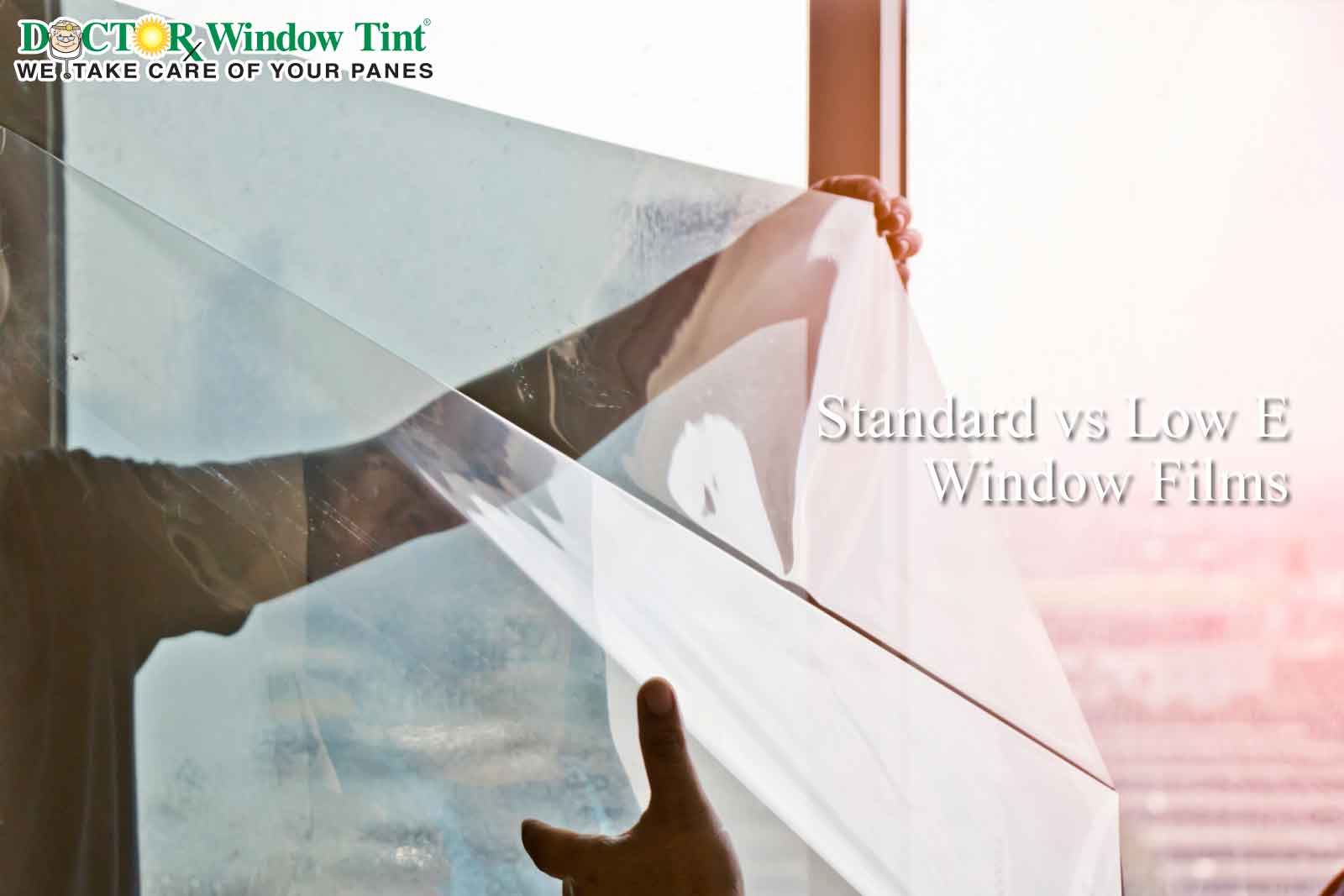
If you’re looking to make a smart and informed decision when buying window film, you need to know the differences between standard vs low emissivity (low-e) film. Window panels are a major component of buildings, they are accountable for up to 60% of a building’s overall energy loss, according to a study by University of West London (2017).
The emissivity (or thermal performance) of window film can make an impact on energy consumption, especially regarding large commercial buildings. Depending on the number of windows, the size of your glass panes and the type of film you want, energy consumption may vary. It is therefore important to know the varying insulation performance window films, so that you can find the right one to match your needs.
Standard vs Low-E Window Film
The first step to choosing the right window film is to get a good overview of each type that is on the market. You will need to compare prices, benefits and disadvantages of low-e vs. standard films, so that you have a sound idea of how each film works.
Each building has different needs, for example, a business owner might want to keep offices cool with window tint, and will therefore require a window film with a high emissivity value. Some business owners might see the price of the film as the determining factor, while others might look at long-term investment and pay more for longer lasting quality.
Not sure what you need? Let’s take a look at the comparisons below:
-
Emissivity
Emissivity, which determines a film’s insulation performance, varies in each type of window film:
- Standard values range from 0.70 to 0.81. This means that 19% to 30% of heat is reflected back into the room, which helps reduce heating costs.
- Low-E, low emissivity, has a standard emissivity rating of 0.33, which means that 67% of heat is reflected back into the room. Newer low-e window films can have a rating as low as 0.07; that means that 93% of heat is reflected back into the room. So, if you’re trying to save money, low-e window film is the way to go.
-
Costs Per Square Foot
The installation process for both standard and low-e window film is the same. However, price and warranty vary, due to the differences in the function of the window film.
- The total cost of installation for standard window products can range from $4 to $6 per square foot. The warranty ranges from 10 to 18 years.
- The total cost of installation for low-e window film ranges between $5 and $8 per square foot. The warranty ranges from 7 to 15 years.
-
ROI
Return on investment (ROI) can depend on many factors. Energy consumption for each building can change, depending on the type of film, the amount and type of windows, electronic cooling systems, external furnishings (such as curtains/overhangs), and even adjacent buildings.
- In standard window film, you can get a general reflective film and a lower reflective film, with each having a different ROI. For standard reflective film, ROI ranges from two to five years. For lower reflectance films, ROI ranges from three to six years.
- In low-e window film, the ROI typically ranges from two to five years. Compared to standard film, low-e is usually faster, due to its higher emissive value.
-
Visibility and View
While window film transparency varies due to tints and other specifications, most types will allow building occupants to enjoy the view. However, if a window has low visible light transmission, (less than 20%) the outdoors may appear to look darker.
- With standard reflective window film, external covers (such as blinds or curtains) may be necessary to decrease unwanted reflections, as some reflective film can produce a bit of glare.
- Low-E window film can be almost invisible in transparency; however, some of the older versions of low e film can sometimes have a visible, iridescent shimmer if installed near energy-saving light bulbs.
Overall Comparison
The newer version of low-e window film tends to have a more transparent film compared to standard window film, allowing natural light while minimizing heat. It is a more expensive option, and the warranty is not as long as standard reflective window film.
Overall, both standard and low e window films are ideal for tackling energy consumption costs; additionally, there are several health benefits of window film that should be considered. The choice comes down to personal preference, as it is up to you to decide on what will suit you best, or how much you are willing to spend.
After using this guide to make a thorough analysis, you can rest easy knowing that you will make an informed decision about which option is best for your building. If you want to learn more about the different types of window film or if you are interested in getting a free estimate, contact Doctor Window Tint today, your expert on all window tinting and security film.

 Brand Window Tinting Film
Brand Window Tinting Film